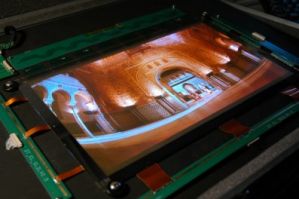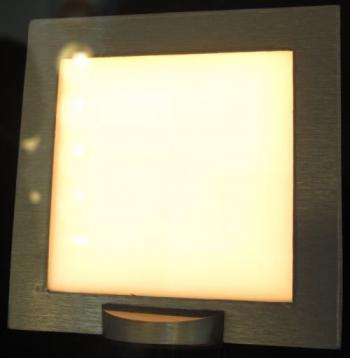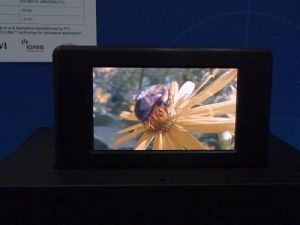 CDT is one of the leaders in OLED research, focusing on Polymer-based OLEDs (PLEDs, also called P-OLEDs). While these OLEDs are lagging behind small-molecule OLEDs in current products (all AMOLEDs today are based on SM-OLEDs), some companies believe that PLEDs are actually the better tech for the future.
CDT is one of the leaders in OLED research, focusing on Polymer-based OLEDs (PLEDs, also called P-OLEDs). While these OLEDs are lagging behind small-molecule OLEDs in current products (all AMOLEDs today are based on SM-OLEDs), some companies believe that PLEDs are actually the better tech for the future.
CDT's CEO, David Fyfe has agreed to answer a few questions we had on CDT's technology. David joined CDT in 2000 as Chairman and CEO. David saw CDT go public in 2004, and then negotiated the sale of CDT to Sumitomo for $285 million (in September 2007). David is also a director of Soligie, an electronics printing company, Acal Energy, a fuel cell technology developer and the Plastic Electronics Foundation.
Q: David - thanks for agreeing to do this interview. Since the Sumitomo acquisition, CDT has been rather quiet... can you give us an update on where's the company now, and where's it is headed?
Since the merger of CDT into Sumitomo Chemical in September 2007, CDT has grown substantially and received considerable capital investment to enable it to remain a leading developer of PLED technology. It works very closely with SCC laboratories in Japan and most recently has been transferring manufacturing process knowhow to SCC's own PLED manufacturing development line, recently commissioned at Ehime on Shikoku, Japan. CDT in partnership with SCC has made large strides in materials lifetimes and efficiencies. SCC prefers to take a lower profile in announcing these advances since its business model is to work with selected display maker partners in a collaborative, confidential relationship. We have also made big strides in the development of top emitting structures and in printing PLED displays. SCC's strategy is that CDT will continue to be its leading development center for PLED technology with Ehime scaling process technology to a yielding process status. CDT is also working very closely with Semprius of North Carolina, USA to develop single crystal silicon TFT structures on which PLED devices can be deposited and driven using Semprius’ proprietary stamping technology.
 CDT 14-inch OLED prototype from 2005
CDT 14-inch OLED prototype from 2005Q: It seems that OLED displays are finally entering the mainstream - we hear of new devices (mainly by Samsung, but also from Sony, Microsoft, LG and others) almost daily. What are your thoughts on this? what are the challenges that still exist for OLEDs?
Sony broke the logjam of resistance to the adoption of OLED in large displays by major display makers with the introduction of its XEL-1 11 OLED TV in 2007. Samsung SDI’s investment in small screen OLED production in 2007, based on LTPS backplanes was another major impetus. Since then, Chi Mei has brought on small OLED screen capacity, TMD (now wholly owned by Toshiba) has built an OLED line to manufacture small screens, LG Display will start up their Gen 3.5 line late this year and if press reports are to be believed, Toppoly will commission their capacity with Nokia as a lead customer and Panasonic have a major OLED development program for large OLED displays.












